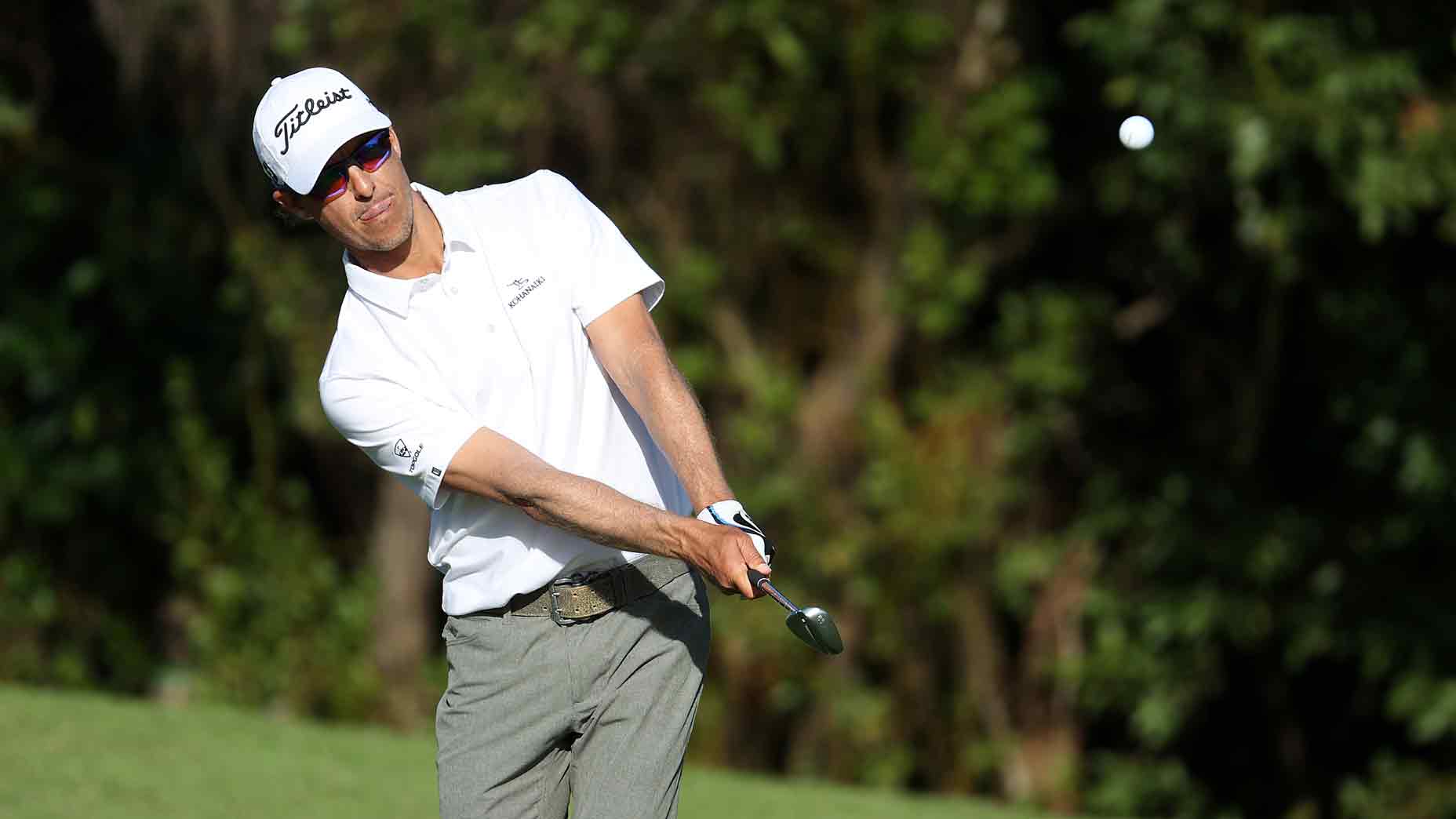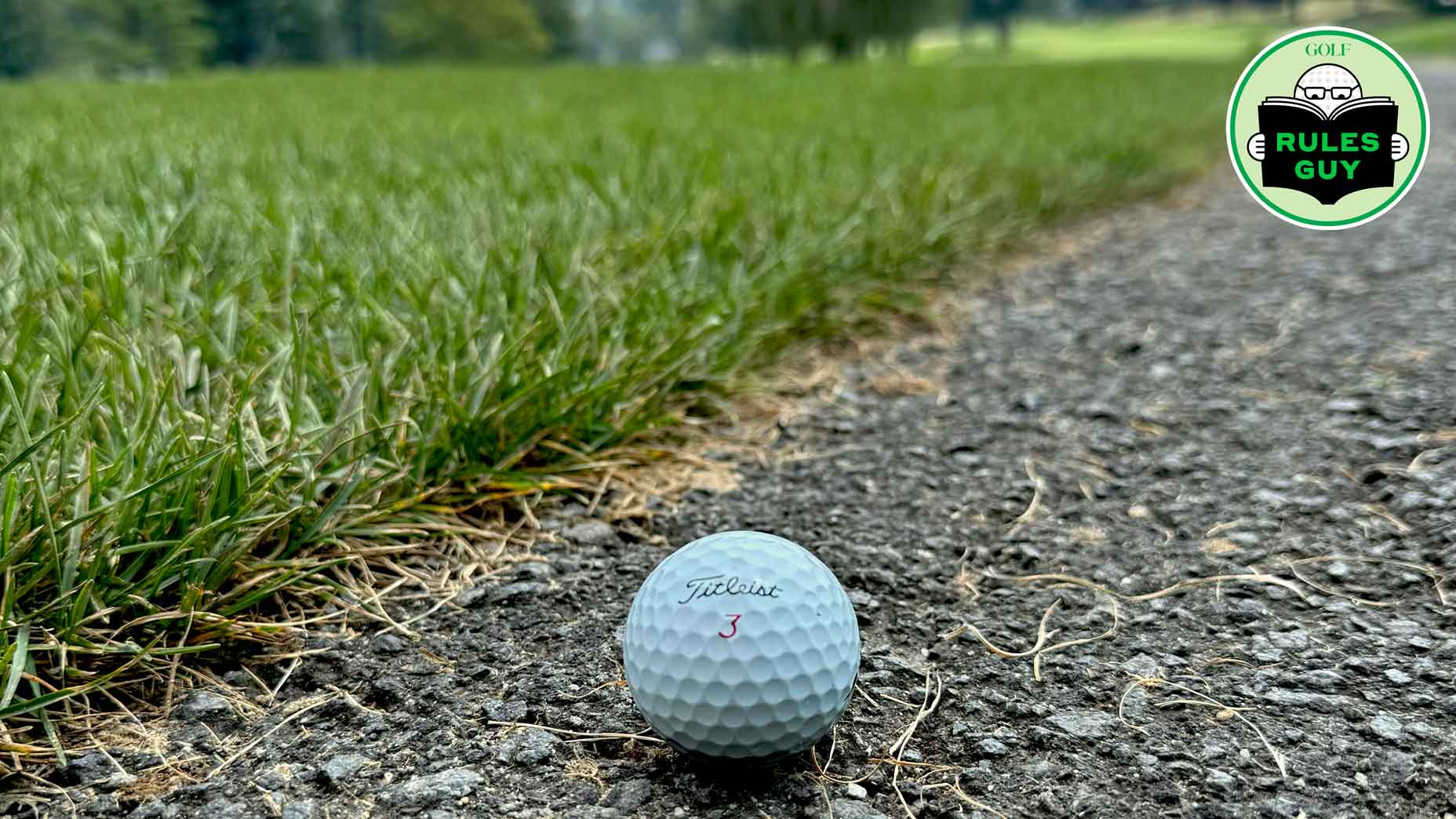When I asked my friend Burt if he could remember my first yip, he said, “I can remember the first time I saw you yip.” Golfers are often precise; precision is a cousin to perfection and there you are — snap! — in the heart of darkness that is any discussion of yipping. This next bit was earned through 16 years of suffering with this odd golfing disorder: the yips reveal an unhealthy love triangle with precision, perfection and expectation as its points. The yipper, like all lovers in pain, cares too much.
Yes, the yips appear as a mechanical breakdown, the inability to make a smooth and repeating stroke on putts that a 10-year-old beginner could handle with playful ease. The yippy stroke feels like your bike’s front left brake pad is stuck on the rim. But deep in the heart of the yipper is a fear of failure.
Burt was in fact the witness to my first yip. It came on a weekday morning in June of 2002. We had arranged to play, through an act of God or possibly Rees Jones, as an unaccompanied (no member with us) twosome at a course I dream about, the National Golf Links of America, where on a previous occasion I had shot my lowest round ever (77). We started on the fourth hole, the course’s famous Redan par 3. I staked a 7-iron. Then I awoke. My downhill birdie putt from about three feet missed on the low side, heinously so. It meant too much to me. The yip wire had been tripped.
I have read lots, watched more, tried contraptions, talked to many, laid hands on every putter in the bin. I have given all the popular grips a shot: the DiMarco claw, Bernhard Langer’s old Dr. Strangelove grip and everything else.
On the short ones, the only thing that worked, or semi-worked, was backhanding them, from the left. During the 2010 U.S. Open, I bought an old Titleist Bulls Eye at a gas station off Highway 1 from a guy selling surfboards. The Bulls Eye (for you kids) is a two-way palindrome of a putter used ingeniously by Corey Pavin for most of his career. Once, at the end of an interview with Pavin, I asked him if Bulls Eye putters had loft on both sides.
“Let me guess,” he said. “You’re going righty on the long ones and lefty on the short.”
“How did you know?”
“We’ve seen everything,” Pavin said.

At times, since that day at the National, I have had some limited success by carrying two putters with opposite orientations (I dropped my 4-iron). For most of the past eight years, I’ve been doing the lefty-righty dance with the Bulls Eye. It makes sense in theory, but the game is played not on a computer screen but in the great outdoors, right? If there’s any sort of match going on, your playing partners and opponents are of course watching you and maybe thinking, “Isn’t this righty-lefty thing a little nutso?” Also, the Bulls Eye has a thin and primitive topline, and I never could figure out how to align it. By the end of last year, we were drifting apart. But even as the short misses were piling up, when I putted cross-handed from the left side I felt comfortable. I didn’t yip. There was something there.
We’ve all seen Jordan Spieth make everything cross-handed, but it’s not like he invented the method. Not even close. Late in 1999, I had gone to see Arnold Palmer for a story, shortly after his wife, Winnie, had died. We were, in a manner, discussing some weighty things, life regrets and whatnot, when Arnold said, “I’ll tell you something I regret. You see that Jimmy Furyk, putting left-hand low? I wish I would have done that.” That is, cross-handed. How’s that for a stamp on a method?
At the start of this golf year I signed a vow and made a commitment: I would be a right-handed golfer to the green and left-handed putter on it. Blaine McCallister, who won five times on Tour in a five-year stretch, made this same righty-lefty switch. The baseball nod is for Blaine, a seamhead if ever there was one. I played one round with him, years ago, with the manager of the Phillies and his dugout coach. Blaine shot 69 on a good course without ever giving a putt a second look. His putting looked easy.
I realize this report is all prologue, but it must be because my new stop-the-yips all-lefty commitment is in its infancy. Before Thanksgiving, for those who might be interested, I’ll type up a progress report and post it on our electronic cousin, GOLF.com. What I can share with you now is the four things I did this spring in the name of a new beginning.
1. I WENT TO SEE A CLUB GUY
I don’t believe that improvement can be bought, but I felt I needed a new fresh-start putter. I went to see Mike Morrison of Izett Golf, venerable greater Philadelphia clubmakers and clubfitters. Mike is certified in the Edel putter-fitting system, but he wouldn’t sell me a fitting session or a putter. He said the putter I came in with—a TaylorMade Rossa Daytona—fit me well, and he could tell I liked it. He said my stroke looked good. (I was killing it on his indoor uphill putting mat.) The only thing giving him pause was my right hand, rising too high and too fast after impact. I said, “I have to leave here with something.” He sold me a new, fat, cobalt blue Winn grip with extra wraps under the right (lower) hand, on this theory: the thickness under the bottom portion of the handle will serve as a silent reminder to keep my right hand low in the follow-through.

2. I WENT TO SEE MY OPHTHALMOLOGIST.
I had three questions for Dr. Steve Goldman. Do I need glasses? Am I right-eye dominant? Do you have any putting suggestions for me? A distillation of his answers: no, yes, practice.
3. I WENT TO SEE A TEACHING PRO
I got a two-hour (as it turned out) putting lesson with PGA teaching professional Bill Sautter of the Philadelphia Cricket Club, a good player and instructor who swings from the right and putts from the left. I made a bunch of good strokes with my ball on a purplish chalk line. But when Bill and I had a putting contest—when it mattered—that front brake got sticky again. We talked about a lot of things, but his main advice was this: when putting for real, imagine a chalk line.
4. I CALLED BLAINE MCCALLISTER.
He couldn’t have been more generous. Blaine told me his life story as a putter. He was a right-handed putter as an amateur and collegiate teammate of Fred Couples and Jim Nantz at Houston. As a young pro, he did the two-way dance with a Bulls Eye. In 1986, in his fifth year on Tour, he committed himself to left-handed putting. The main thing he picked up from me was my self-consciousness about how long it took me to get organized over the ball and the rise of doubt during those long what-must-they-be-thinking seconds prior to starting back the club.
That’s when Blaine took over the conversation and said, “You have already scarred yourself as a right-handed putter. Don’t do it from the left! Think of it this way: When you write your columns, do you worry about what others will think — or do you write what you think you should write?”
Whoa. Now there’s a comment with broad application, right? I’m taking it to heart and to the green.
Anyway, this is a work in progress.







